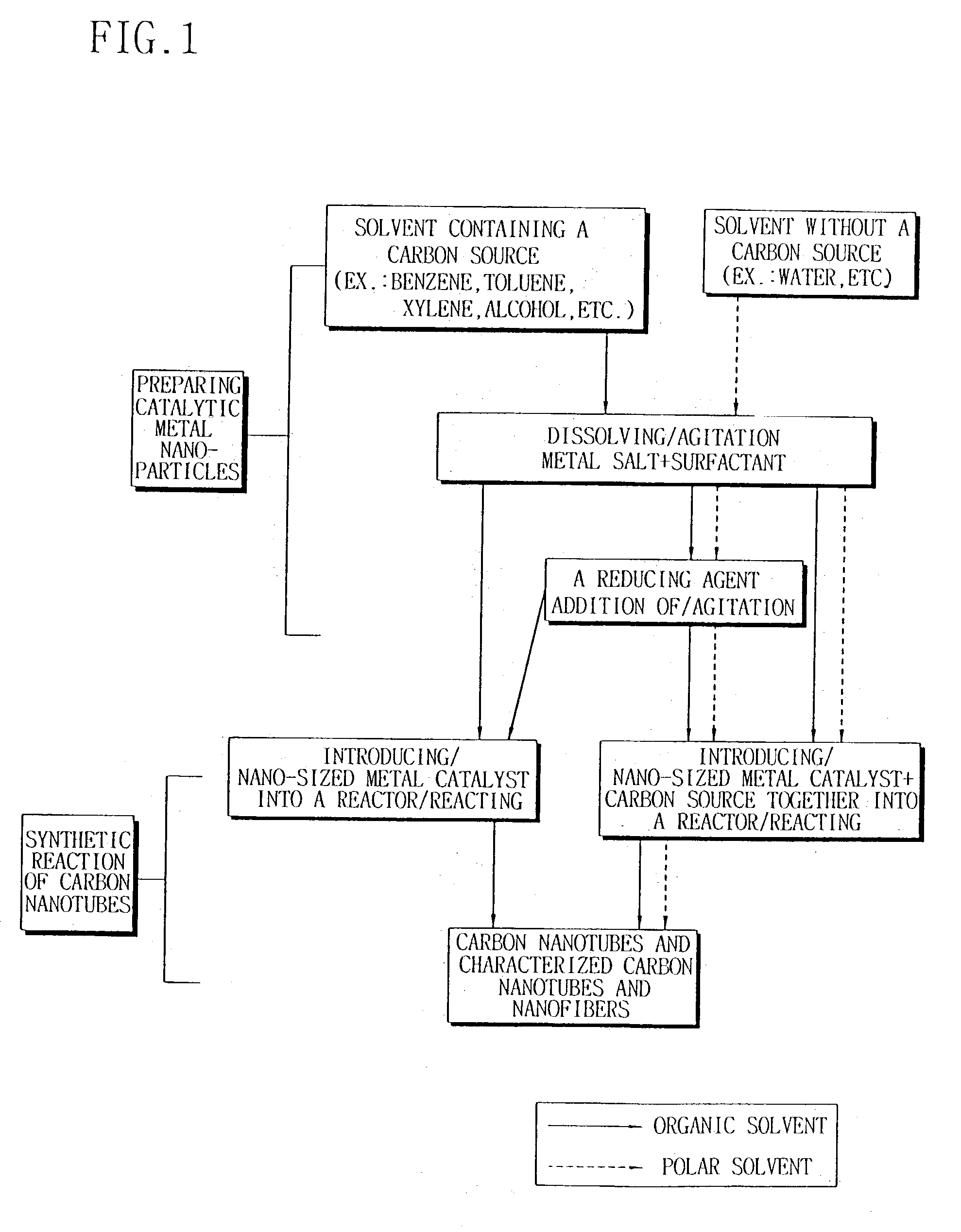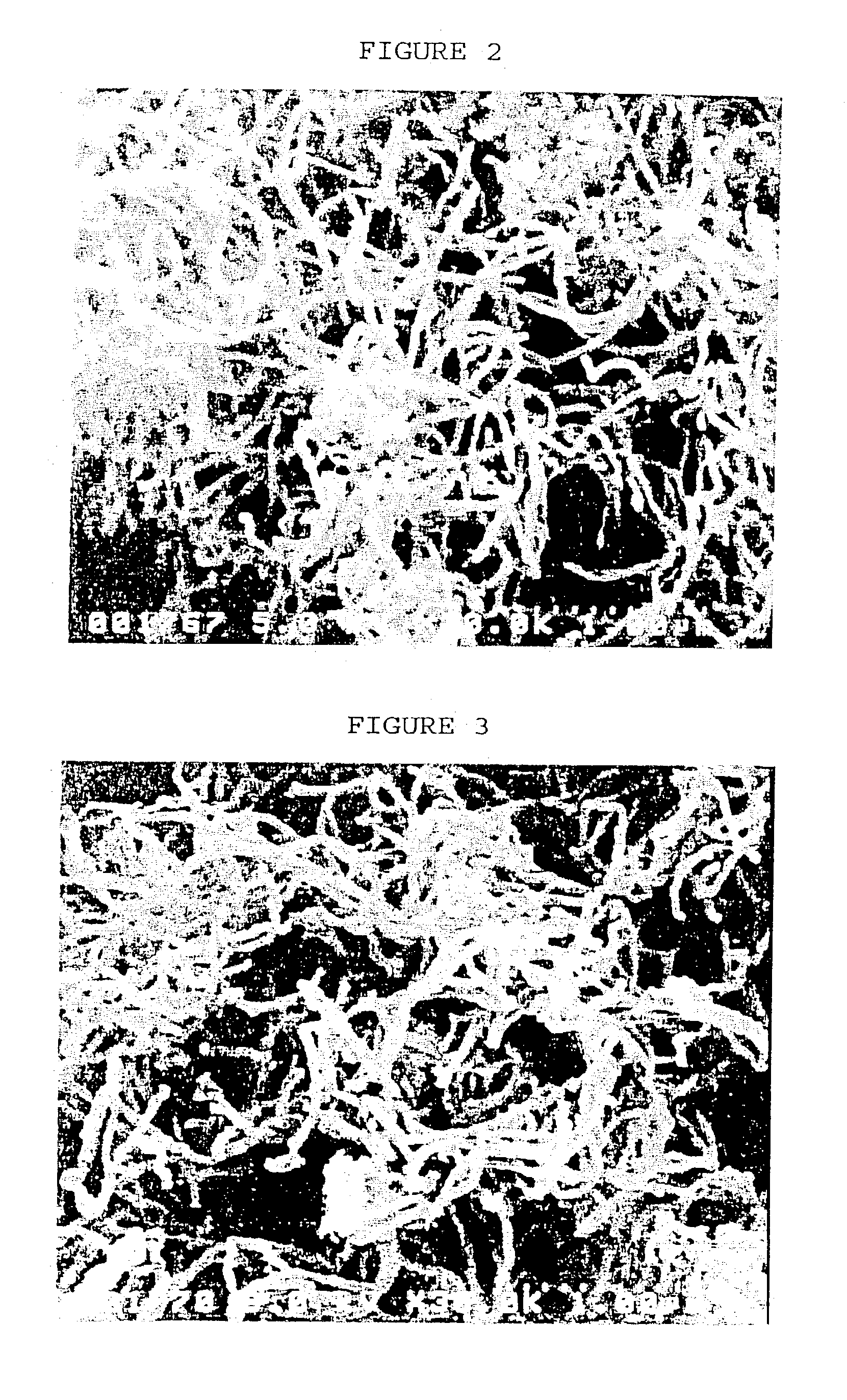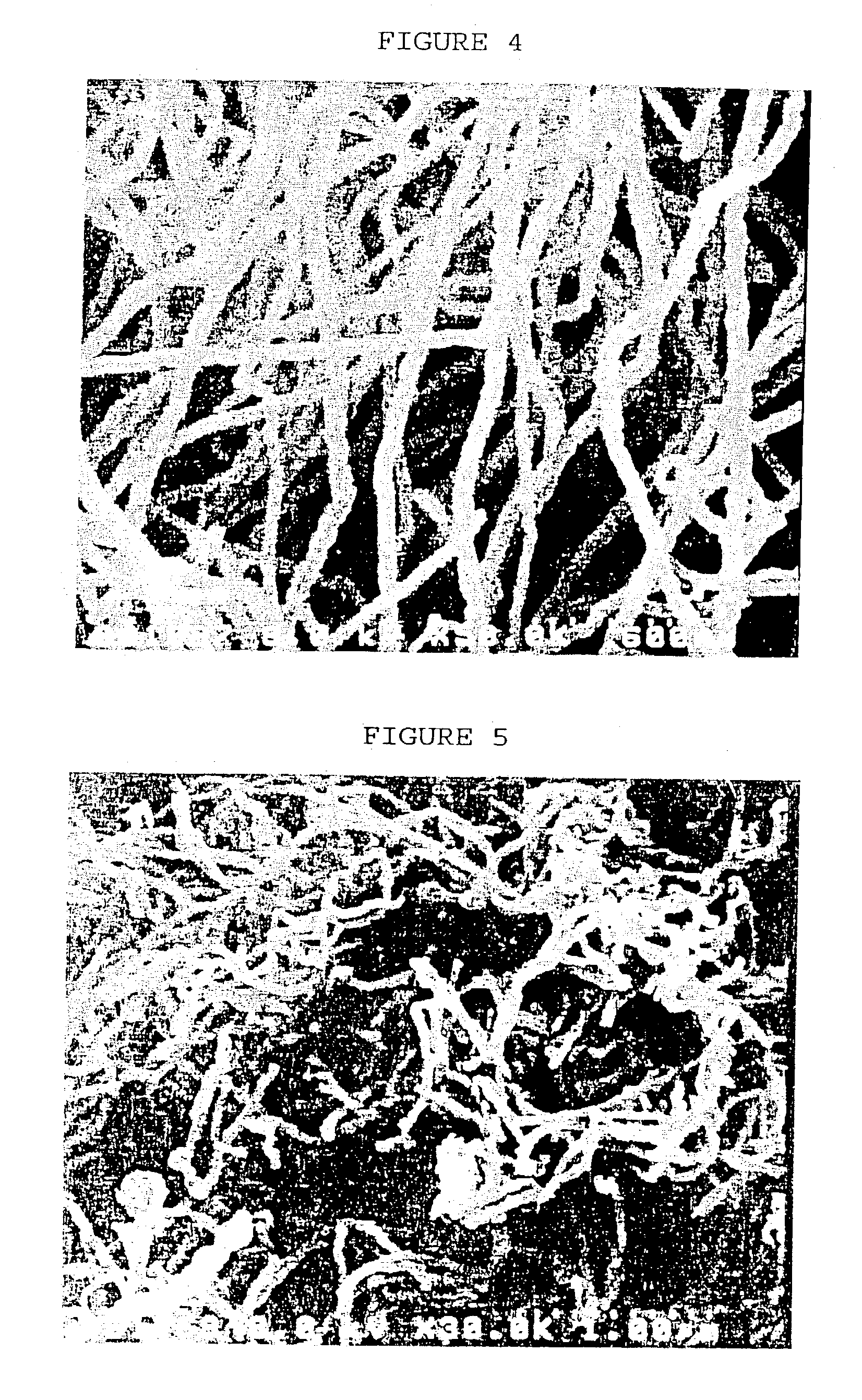Preparation of carbon nanotubes
a technology of carbon nanotubes and nanofibers, which is applied in the direction of carbonsing rags, metal/metal-oxide/metal-hydroxide catalysts, physical/chemical process catalysts, etc., can solve the problems of difficult to prepare nanometer-sized catalyst particles containing two or more transition metal species, uniform composition and controlled size, and impossible to continue the preparation of carbon nanotubes
- Summary
- Abstract
- Description
- Claims
- Application Information
AI Technical Summary
Benefits of technology
Problems solved by technology
Method used
Image
Examples
example 1
[0054] To 40 ml of benzene, 3.516 g (10% by weight of benzene) of polyoxyethylene (20) sorbitan monolaurate (Tween.RTM.-20) and 0.0648 g (a quantity required for preparing a 0.01M benzene solution) of FeCl.sub.3 were added, and the mixture was stirred for 24 hours to give a solution of nanoparticles. Tween.RTM.-20 is a nonionic surfactant which plays a role of stabilizing the nanoparticles to be formed and reducing the metal ions.
[0055] It was confirmed by transmission electron microscopy (TEM) that the nanoparticle solution obtained above contained fine metal particles with a size ranging from 2 to 20 nm.
[0056] Reaction was carried out by introducing the obtained solution (0.34 ml / min) together with a carrier gas (Ar, flow rate: 100 sccm) into a reactor at 800.degree. C. for 20 minutes. The product was obtained as a black powder.
[0057] The product obtained above was analyzed by scanning electron microscopy (SEM) and transmission electron microscopy (TEM). It was confirmed that carb...
example 2
[0058] To a solution of nanoparticles prepared in the same manner as in Example 1, 0.01 g (0.005 mol) of LiBH.sub.4 was added as a reducing agent, and the mixture was stirred for 24 hours to give a solution of nanoparticles with a size ranging from 2 to 20 nm. Somewhat severe flocculation of the particles was observed, compared with the case where no reducing agent was added.
[0059] The solution obtained above was introduced into the reactor in the same manner as in Example 1, and carbon nanotubes with a mean diameter of about 70 nm were obtained.
example 3
[0060] Carbon nanotubes with a mean diameter of about 60 nm were obtained in the same manner as in Example 1, except that toluene or xylene was used respectively in place of benzene. The SEM micrograph of the carbon nanotubes is shown in FIG. 3.
PUM
| Property | Measurement | Unit |
|---|---|---|
| Polarity | aaaaa | aaaaa |
| Structure | aaaaa | aaaaa |
| Shape | aaaaa | aaaaa |
Abstract
Description
Claims
Application Information
 Login to View More
Login to View More - R&D
- Intellectual Property
- Life Sciences
- Materials
- Tech Scout
- Unparalleled Data Quality
- Higher Quality Content
- 60% Fewer Hallucinations
Browse by: Latest US Patents, China's latest patents, Technical Efficacy Thesaurus, Application Domain, Technology Topic, Popular Technical Reports.
© 2025 PatSnap. All rights reserved.Legal|Privacy policy|Modern Slavery Act Transparency Statement|Sitemap|About US| Contact US: help@patsnap.com



